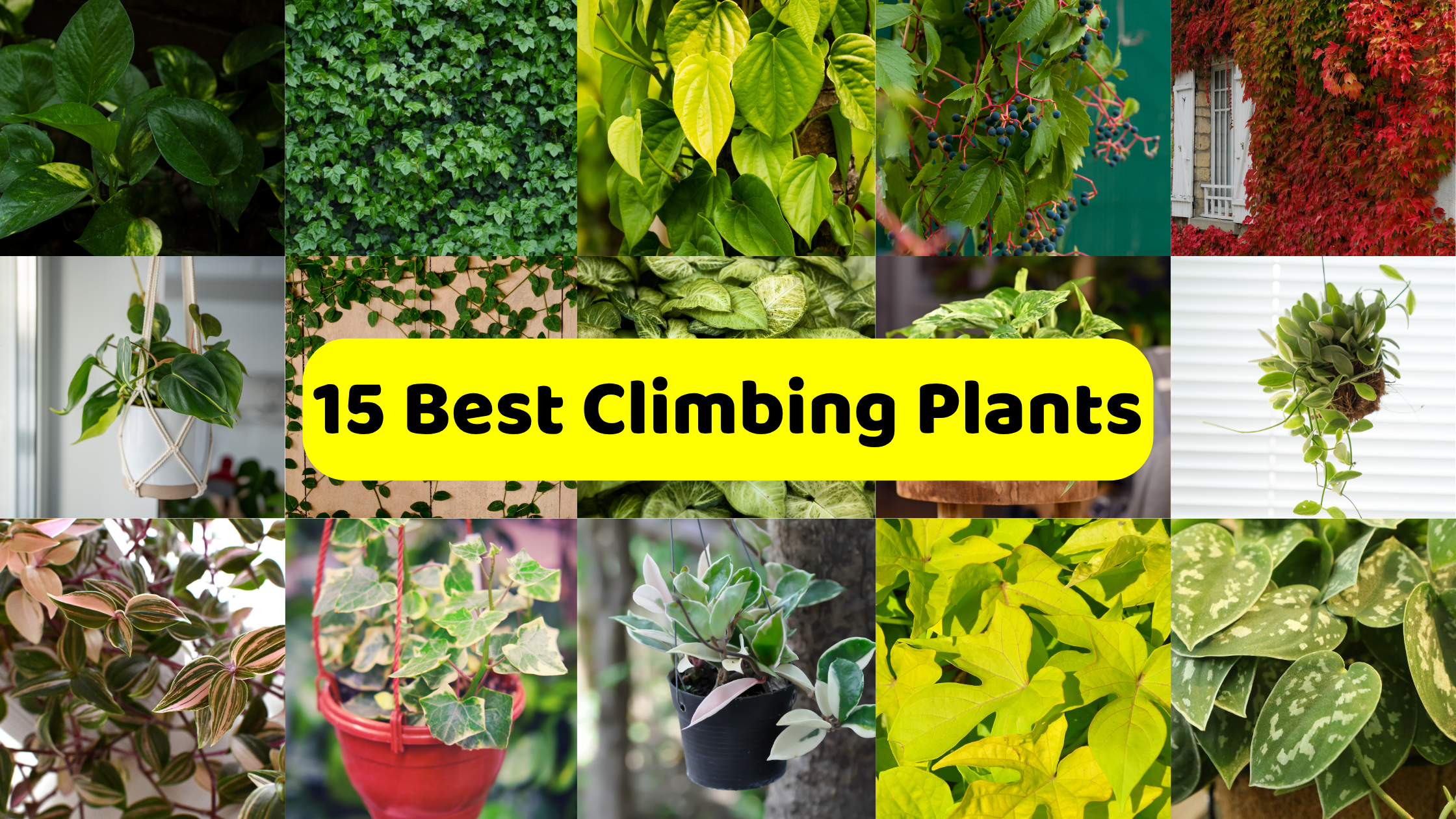Table of Contents
Introduction
Ever dreamt of growing a climber plant against that plain wall in your home, garden, or entrance? But confused about which one to grow? Then you’re in the right place.
Climbers are a gardener’s secret weapon easy to grow, visually striking, and incredibly versatile. From creating natural green screens to adding depth and movement to vertical spaces, climbing plants bring both beauty and function.
Whether it’s a balcony railing, a garden fence, or a shaded entrance wall, climbers can instantly transform your surroundings with minimal space and effort. They’re also perfect for pergolas, archways, poles, trellises, or even large pots placed near walls and windows.
In this blog, we’ve handpicked 15 of the best climber plants that thrive in Indian conditions indoors or outdoors. The list includes a variety of options such as easy growers, low-maintenance plants, climbers suitable for pots, shade-loving varieties, and more, along with their care tips and unique features.
And to make your decision even easier, we’ve classified these plants into helpful categories such as indoor climbers, outdoor climbers, low-maintenance plants, fast growers, climbers for pots, shade-loving varieties, ornamental foliage climbers, air-purifying plants, and vertical garden-friendly options at the end of the blog, so you can quickly find a climber that suits your needs.
So without further delay, let’s dive into the blog!
15 Best Climbing Plants for Indian Homes and Gardens
Money Plant
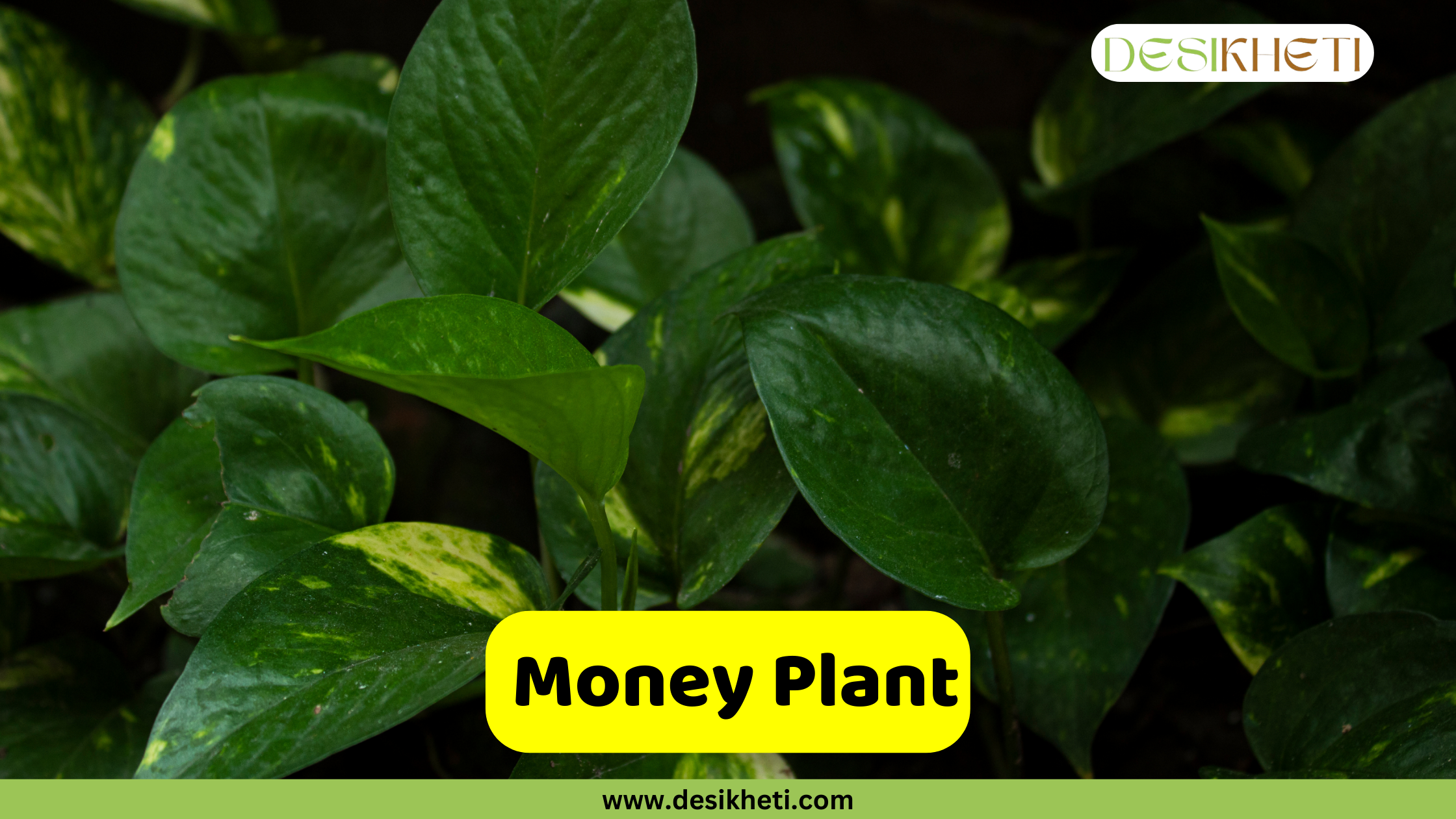
Botanical Name: Epipremnum aureum
The Money Plant is a widely grown evergreen climber known for its heart-shaped, glossy leaves, often variegated in shades of green, yellow, or white. It is a fast-growing and hardy vine that can either trail or climb with support. Its attractive foliage and low-maintenance nature make it an excellent choice for both indoor and outdoor settings.
This plant thrives in bright, indirect sunlight and prefers well-drained soil. Money Plants are ideal for balconies, living rooms, office spaces, or shaded verandas, where they can be grown in pots, hanging baskets, or along walls and trellises.
Uses and Benefits:
- Improves indoor air quality
- Very easy to care for, even for beginners
- Can be propagated easily through stem cuttings
- Requires minimal maintenance
English Ivy
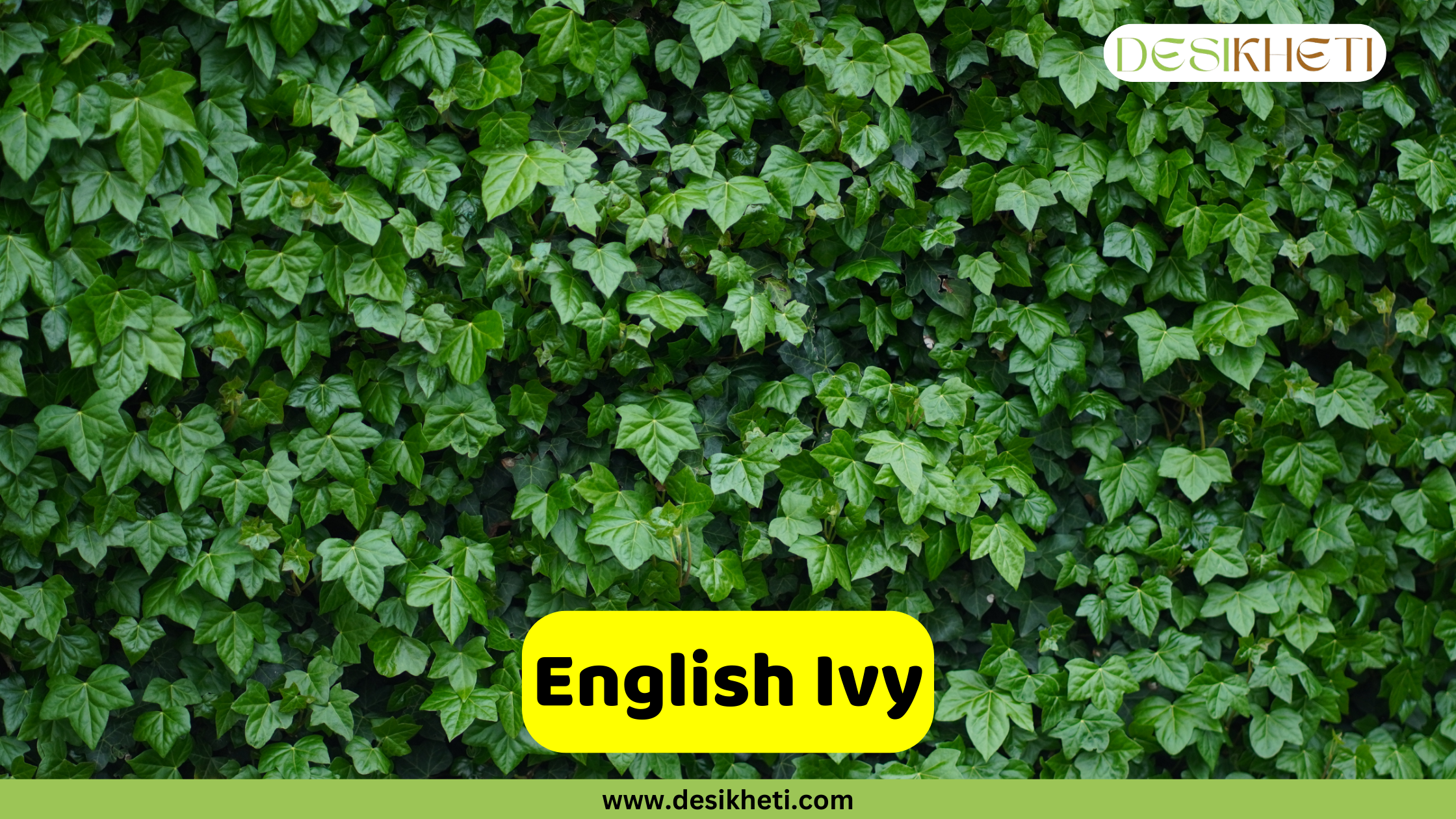
Botanical Name: Hedera helix
English Ivy is a hardy, evergreen climber with dark green, lobed leaves and a vigorous growth habit. It is often used to create dense ground covers or to add vertical greenery to walls, fences, or trellises. This climber uses small rootlets to cling to surfaces and is admired for its lush foliage and adaptability.
It grows well in partial to full shade and prefers moist, well-drained soil. English Ivy thrives in cooler climates, with an ideal temperature range of 10°C to 25°C. It can be placed in shaded garden corners, on walls, or used as a hanging basket plant indoors.
Uses and Benefits:
- Excellent for covering walls, trellises, and fences
- Offers year-round greenery, especially in shady spaces
- Can be grown indoors for ornamental appeal
Betel Leaf Plant

Botanical Name: Piper betle
The Betel Leaf Plant is a culturally significant evergreen climber, known for its shiny, heart-shaped green leaves and aromatic scent. Traditionally used in Indian rituals and for chewing with areca nuts, this plant holds both medicinal and commercial value.
It climbs using its twining stems and grows best with support from trellises or poles. It prefers a warm, humid tropical climate and thrives in partial shade or filtered sunlight. The plant grows best in moist, fertile, well-drained soil and requires regular watering.
Uses and Benefits:
- Ideal for home use in traditional cuisine and rituals
- Grows well in limited spaces with vertical support
Grape Ivy

Botanical Name: Cissus rhombifolia
Grape Ivy is a beautiful, fast-growing climber with glossy, lobed green leaves that resemble grapevine foliage. It is often grown as an ornamental plant both indoors and outdoors due to its elegant appearance and easy-to-manage growth.
This woody vine can either trail from hanging baskets or climb with the help of supports, making it highly versatile. It grows well in bright, indirect light. Grape Ivy prefers well-drained soil and moderate watering. Allow the topsoil to dry slightly between waterings.
Uses and Benefits:
- Enhances home interiors with its lush, decorative foliage
- Ideal for covering fences, balconies, or walls in shaded areas
- Low-maintenance plant
- Easily propagated from stem cuttings
Boston Ivy
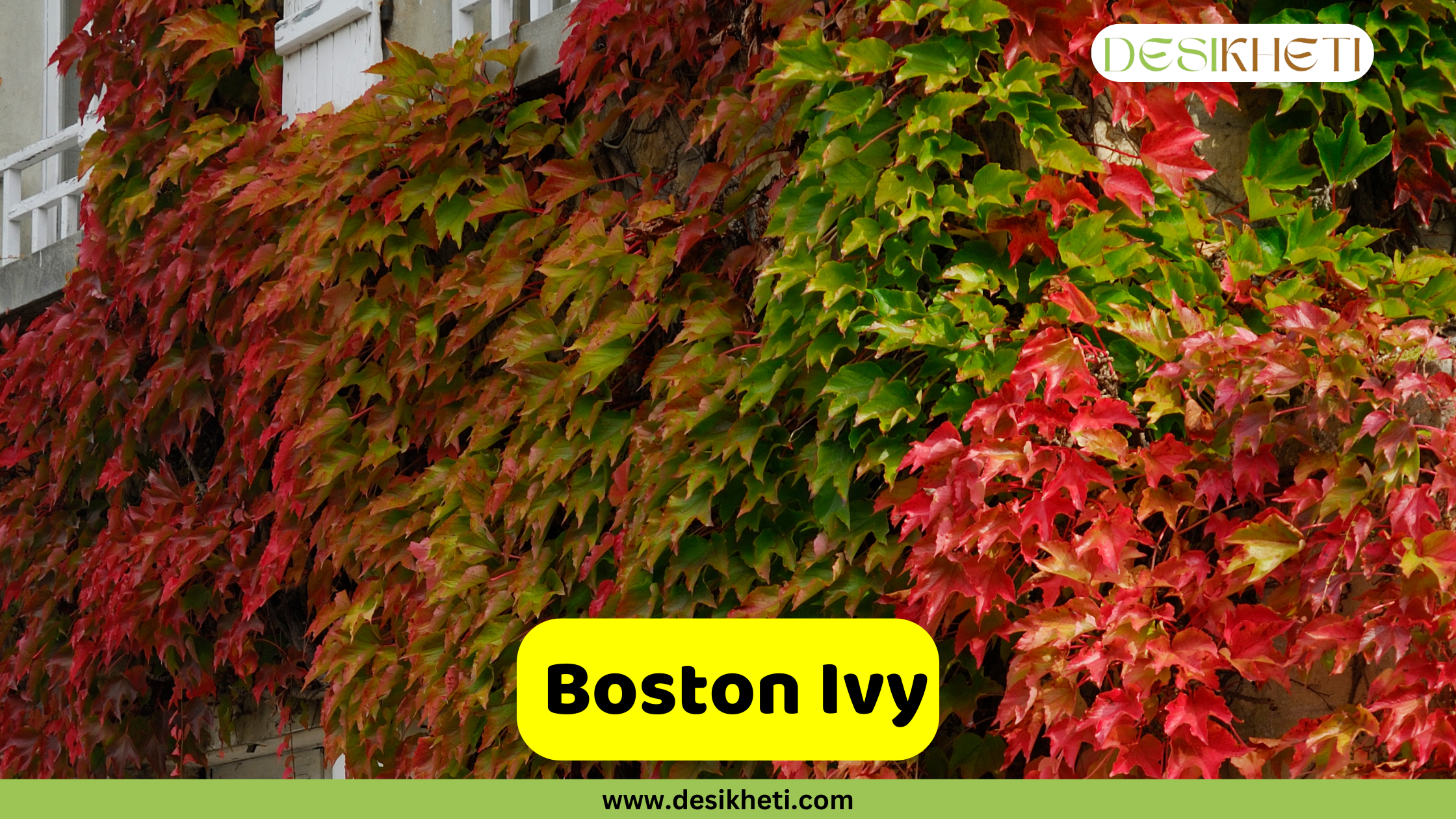
Botanical Name: Parthenocissus tricuspidata
Boston Ivy is a fast-growing, deciduous climber known for its lobed green leaves that turn stunning shades of red and orange in autumn. Its seasonal color change adds unique visual interest to any garden or building façade.
It thrives in full sun to partial shade and grows best in well-drained, fertile soil with good moisture retention. Ideal placements include garden walls, pergolas, trellises, and house exteriors.
Uses and Benefits:
- Excellent for vertical gardening
- Adds dramatic autumn colors to landscapes
- Prevents soil erosion on slopes and embankments
Heartleaf Philodendron

Botanical Name: Philodendron hederaceum
Heartleaf Philodendron is a popular evergreen climber recognized for its shiny, heart-shaped dark green leaves. It’s a favorite indoor plant due to its ability to thrive in low-light conditions and its attractive trailing or climbing growth. This plant climbs using aerial roots and can easily be trained along supports or left to cascade from pots.
It prefers bright, indirect light but can adapt to lower light indoors. Perfect for indoor corners, hanging baskets, or shaded outdoor nooks.
Uses and Benefits:
- Ideal for indoor spaces with limited natural light
- Adds lush greenery without requiring much care
- Can be easily propagated from stem cuttings
- Suitable for vertical indoor gardening or hanging displays
Creeping Fig
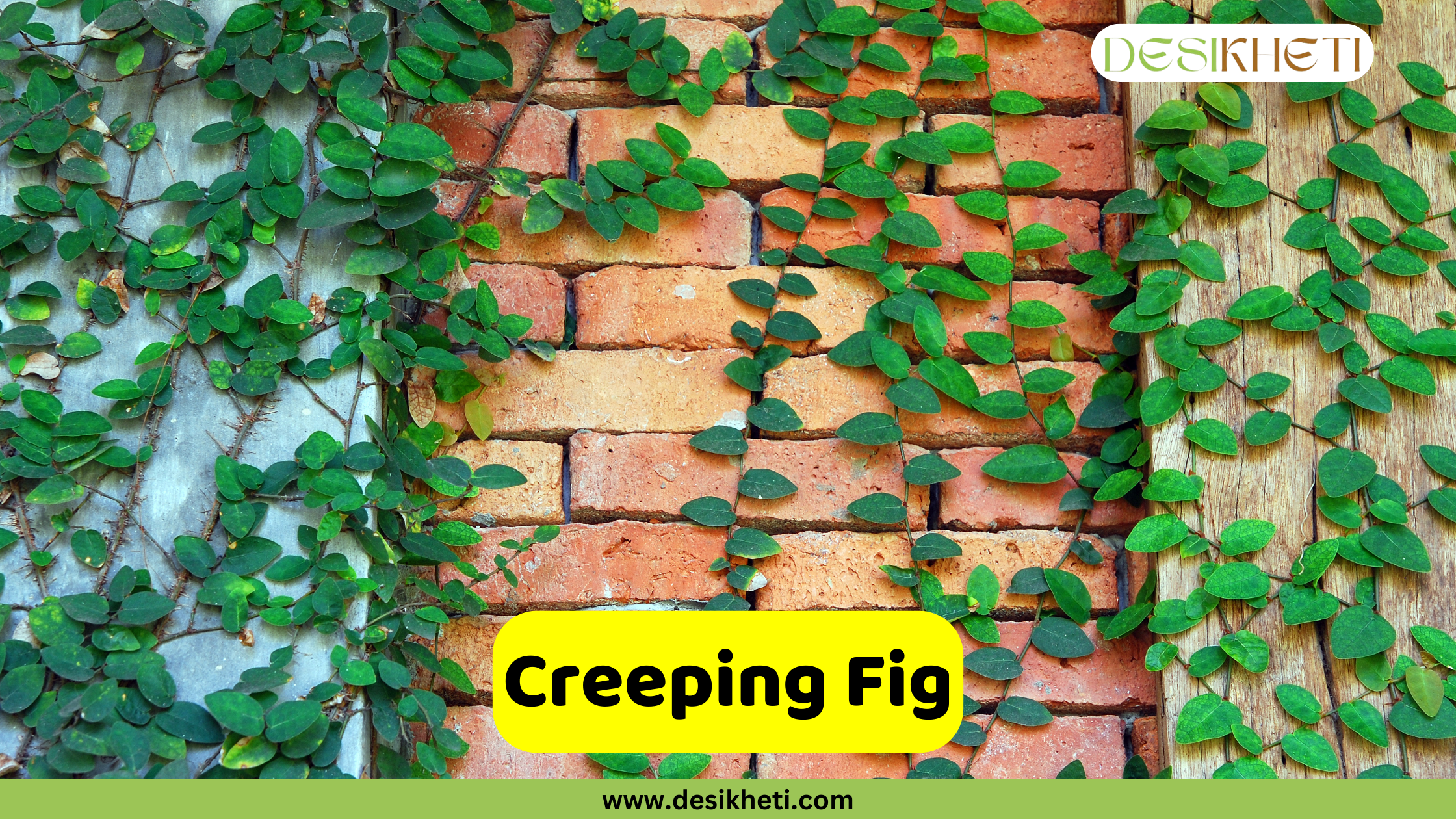
Botanical Name: Ficus pumila
Creeping Fig is a vigorous evergreen climber with small, heart-shaped leaves and a dense growth habit. It clings tightly to surfaces using aerial roots, forming a beautiful green mat over walls, fences, and trellises.
It prefers partial to full shade and grows best in moist, well-drained soil rich in organic matter. Creeping Fig is commonly planted along garden walls, compound fences, and pergolas.
Uses and Benefits:
- Ideal for vertical gardening on walls and trellises
- Easily propagated through stem cuttings
Arrowhead Vine
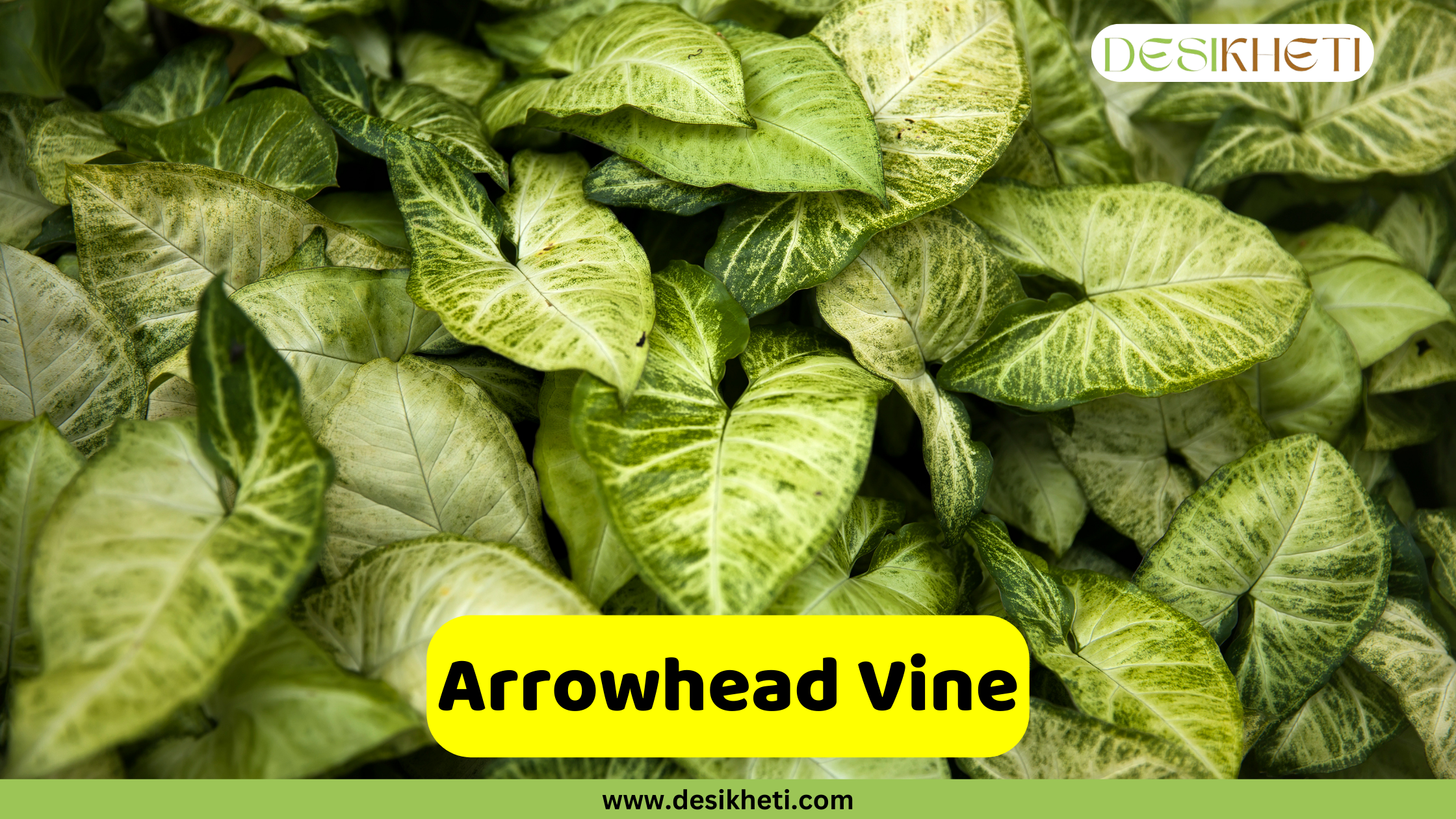
Botanical Name: Syngonium podophyllum
Arrowhead Vine is a stylish evergreen climber known for its arrow-shaped leaves that come in shades of green, white, and pink. This versatile plant can climb or trail, making it suitable for pots, hanging baskets, and trellises. Its compact growth and decorative foliage make it a popular choice for home and office décor.
It grows well in bright, indirect light and prefers well-drained, fertile soil with consistent moisture. It is commonly placed in living rooms, study areas, balconies, or shaded garden corners.
Uses and Benefits:
- Enhances indoor aesthetics with colorful foliage
- Easy to grow in small pots or as a climber
- Can be propagated quickly through cuttings
Marble Queen Pothos
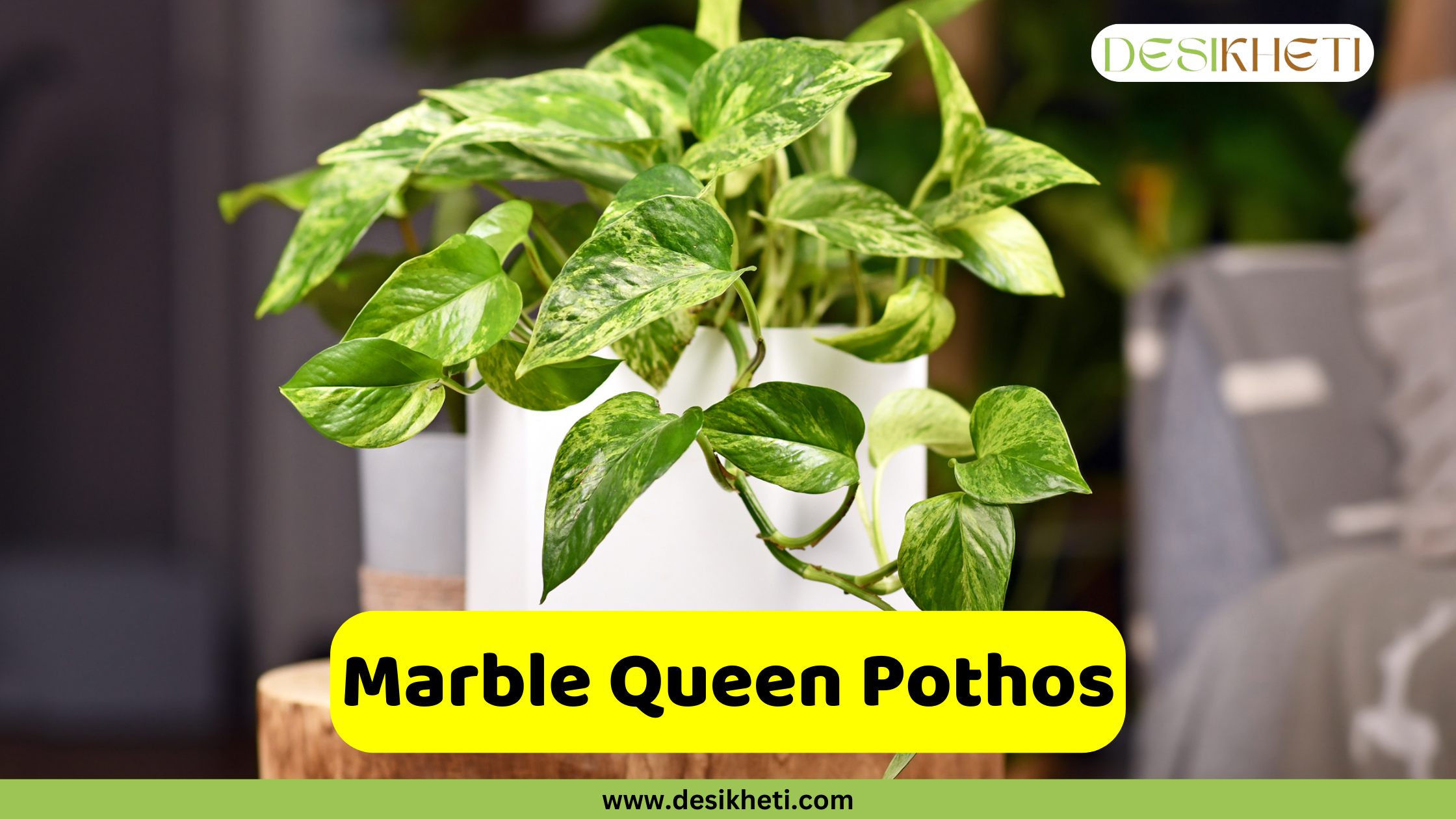
Botanical Name: Epipremnum aureum ‘Marble Queen’
The Marble Queen Pothos is a stunning evergreen climber with marbled leaves of creamy white and green. It is a popular ornamental plant known for its elegant variegation. Like other pothos varieties, it can climb walls or trail from baskets with the help of aerial roots.
It prefers bright, indirect light. It grows best in well-drained, fertile soil and requires moderate watering, allowing the topsoil to dry between waterings. This plant is ideal for indoor rooms, office desks, balconies, and shaded patios.
Uses and Benefits:
- Perfect for indoor decoration with eye-catching foliage
- Thrives with minimal care and water
- Easy to propagate by stem cuttings in water or soil
- Low-maintenance plant for beginners and urban homes
String of Nickels
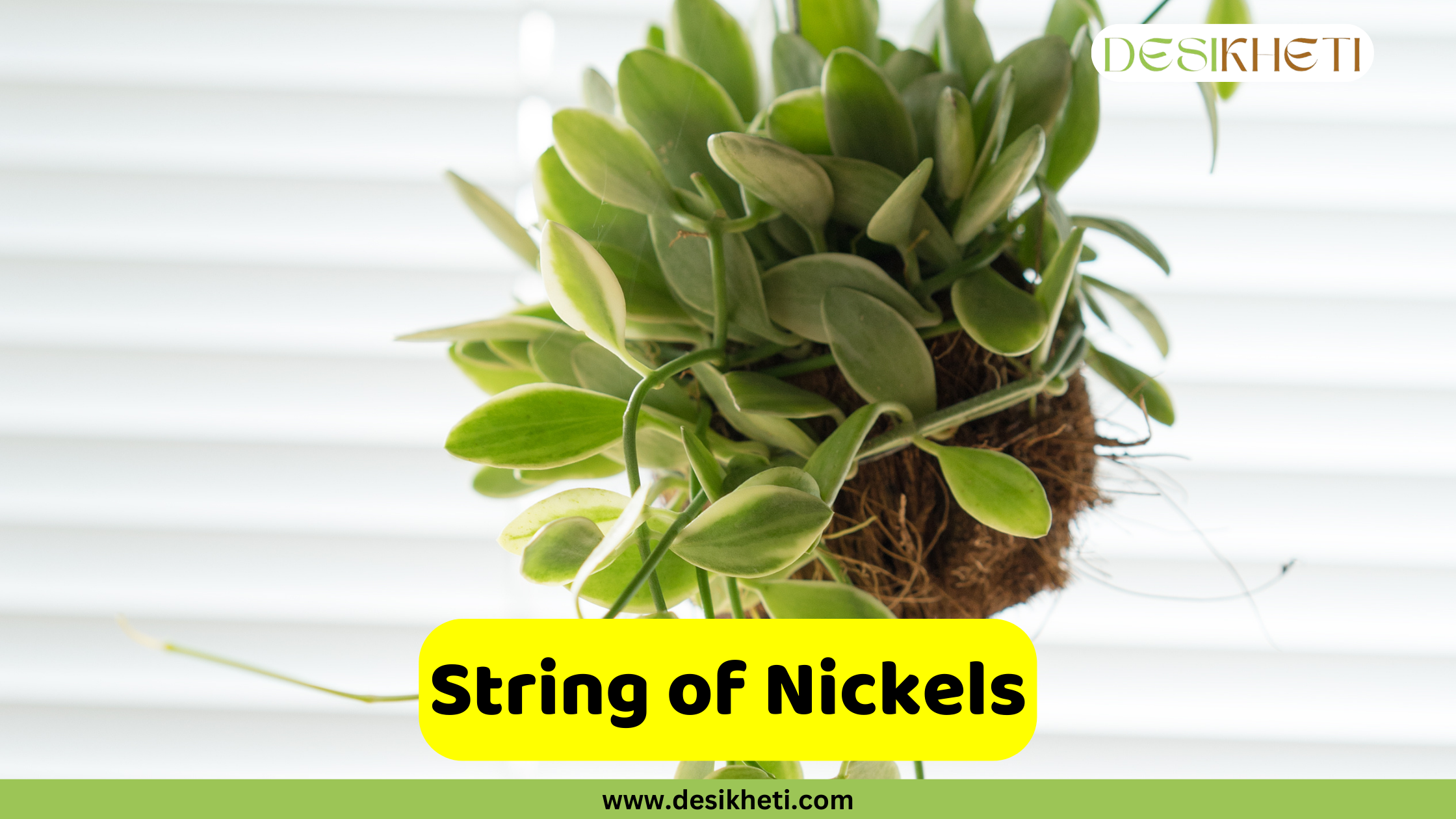
Botanical Name: Dischidia nummularia
String of Nickels is a slow-growing, epiphytic climber known for its small, round, coin-shaped succulent leaves that trail beautifully from hanging baskets. This tropical plant naturally grows on tree trunks in humid forests and develops long, trailing vines that add unique visual appeal to indoor settings.
It grows best in bright, indirect light. The plant prefers warm temperatures (18°C to 30°C) with high humidity. It can be grown on balconies, shaded patios, or as part of a vertical garden indoors.
Uses and Benefits:
- Adds unique foliage texture to indoor plant collections
- Ideal for decorative hanging baskets and small vertical spaces
Zebrina
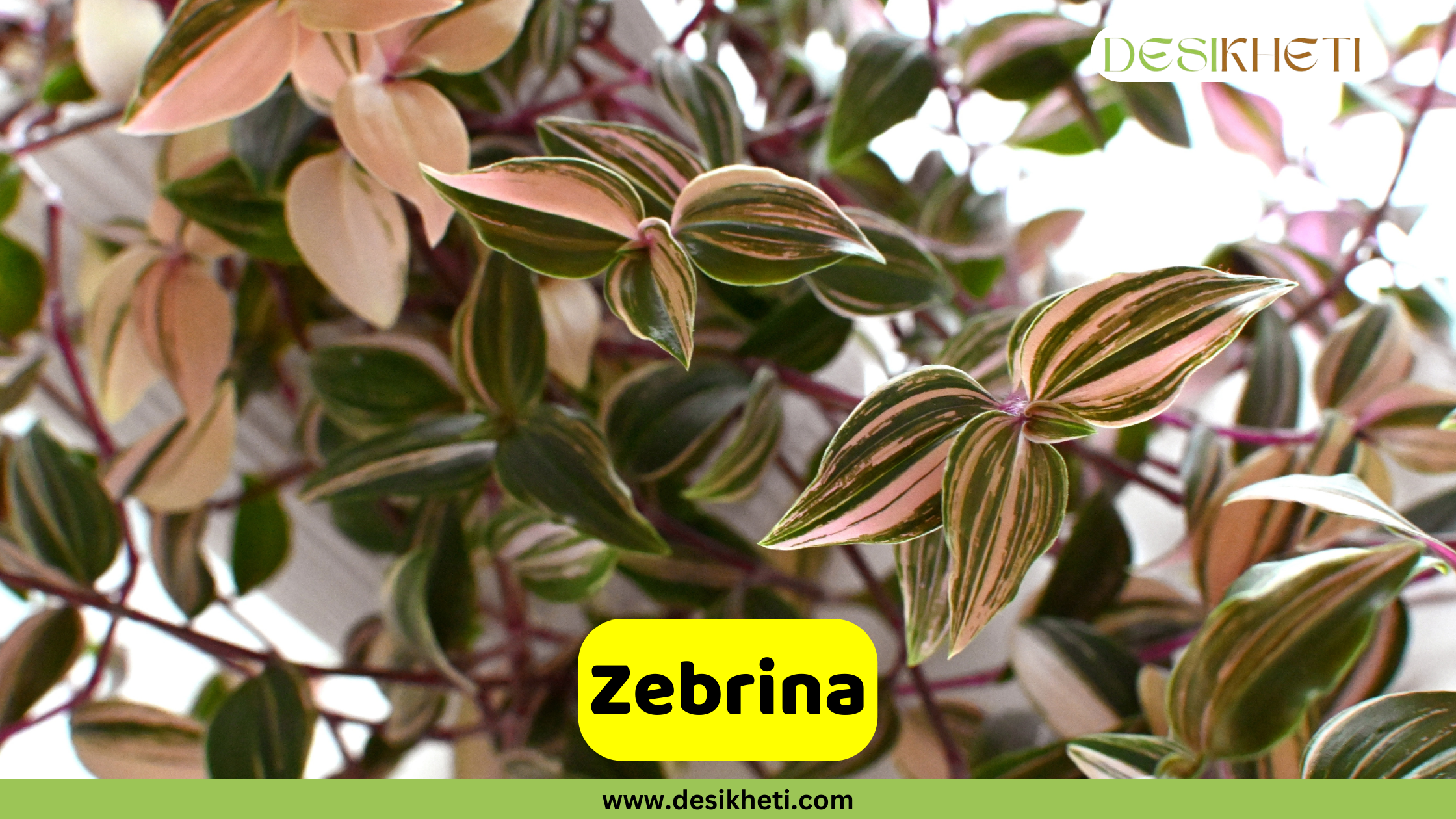
Botanical Name: Tradescantia zebrina
Zebrina, also known as Wandering Jew or Inch Plant, is a vibrant and fast-growing trailing or climbing plant with striking purple and silver-striped leaves. It grows close to the ground or cascades over pots, making it ideal for both indoor decoration and outdoor ground cover.
It prefers bright, indirect light but can tolerate partial shade. The ideal temperature is between 18°C and 30°C, and it thrives in warm climates. Indoors, it looks stunning in hanging pots or trailing over shelves.
Uses and Benefits:
- Excellent trailing plant for baskets and balcony railings
- Adds color and contrast to indoor and shaded garden spots
- Easy to propagate and maintain for beginner gardeners
Wax Ivy

Botanical Name: Senecio macroglossus
Wax Ivy is a glossy-leaved evergreen climber with heart-shaped foliage and a waxy texture, giving it a shiny, ornamental appearance. It grows moderately and can climb trellises or trails from hanging baskets, adding deep green color and structure to any garden or balcony.
This plant thrives in bright, indirect light and well-drained soil. It prefers temperatures between 18°C and 28°C and requires moderate watering. It is ideal for shaded patios, indoor corners, or as a vertical climber.
Uses and Benefits:
- Great for decorating trellises, balconies, and patios
- Low-maintenance climber for shaded spaces
- Suitable for both indoor and outdoor greenery
Hoya
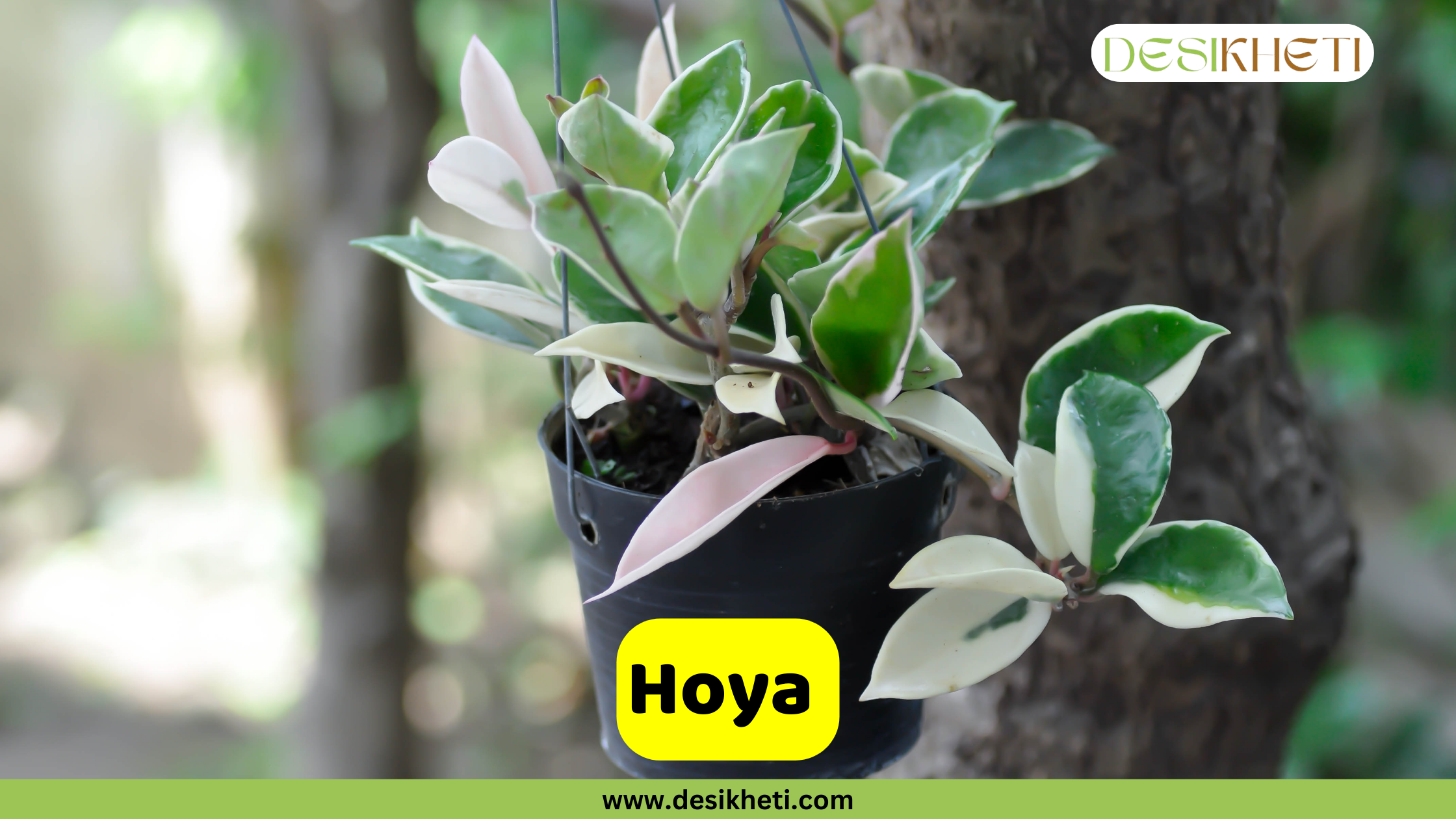
Botanical Name: Hoya carnosa
Hoya is a beautiful trailing or climbing vine with thick, waxy, oval-shaped leaves. Occasionally, it produces clusters of fragrant, star-shaped flowers. While blooming is less frequent indoors, the foliage alone is a charming addition to home gardens. Hoya prefers bright, filtered light and is suitable for indoor trellises, balcony shelves, or hanging baskets.
Uses and Benefits:
- Adds tropical greenery and unique texture to homes
- Fragrant flowers attract pollinators in outdoor setups
- Low-maintenance and perfect for indoor plant lovers
- Suitable for growing vertically in compact spaces
Sweet Potato Vine
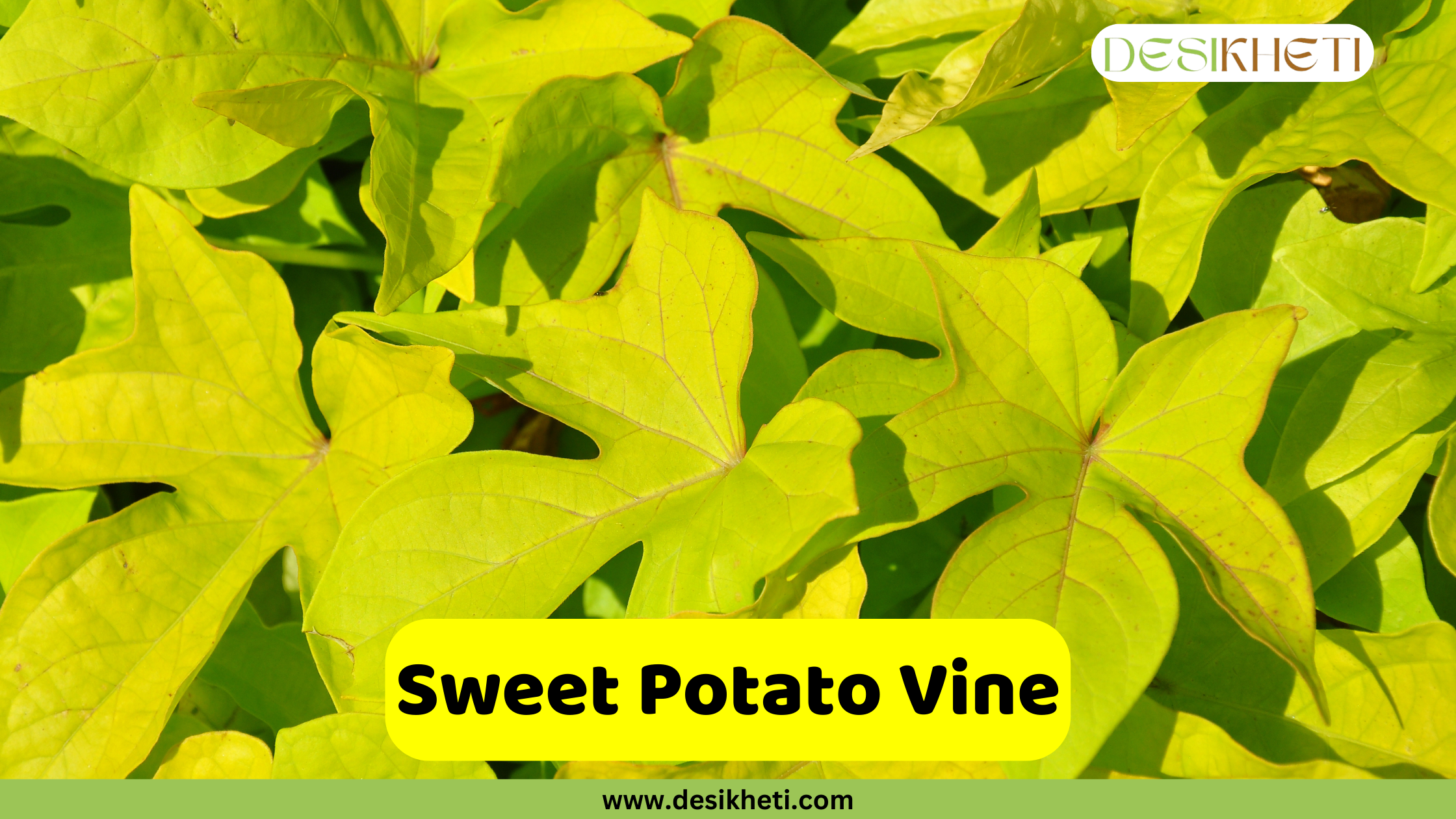
Botanical Name: Ipomoea batatas
Sweet Potato Vine is a fast-growing climber or trailer with striking foliage in shades of green, bronze, or purple. Known for its lush ground cover and ornamental charm, it is also cultivated for its edible tubers in kitchen gardens. It grows best in full sun to partial shade and can quickly cover walls, fences, garden beds, and container edges.
Uses and Benefits:
- Provides dense ground cover and helps prevent erosion
- Works well in ornamental gardens and kitchen farms
- Easy to propagate from stem cuttings or tubers
Silver Vine
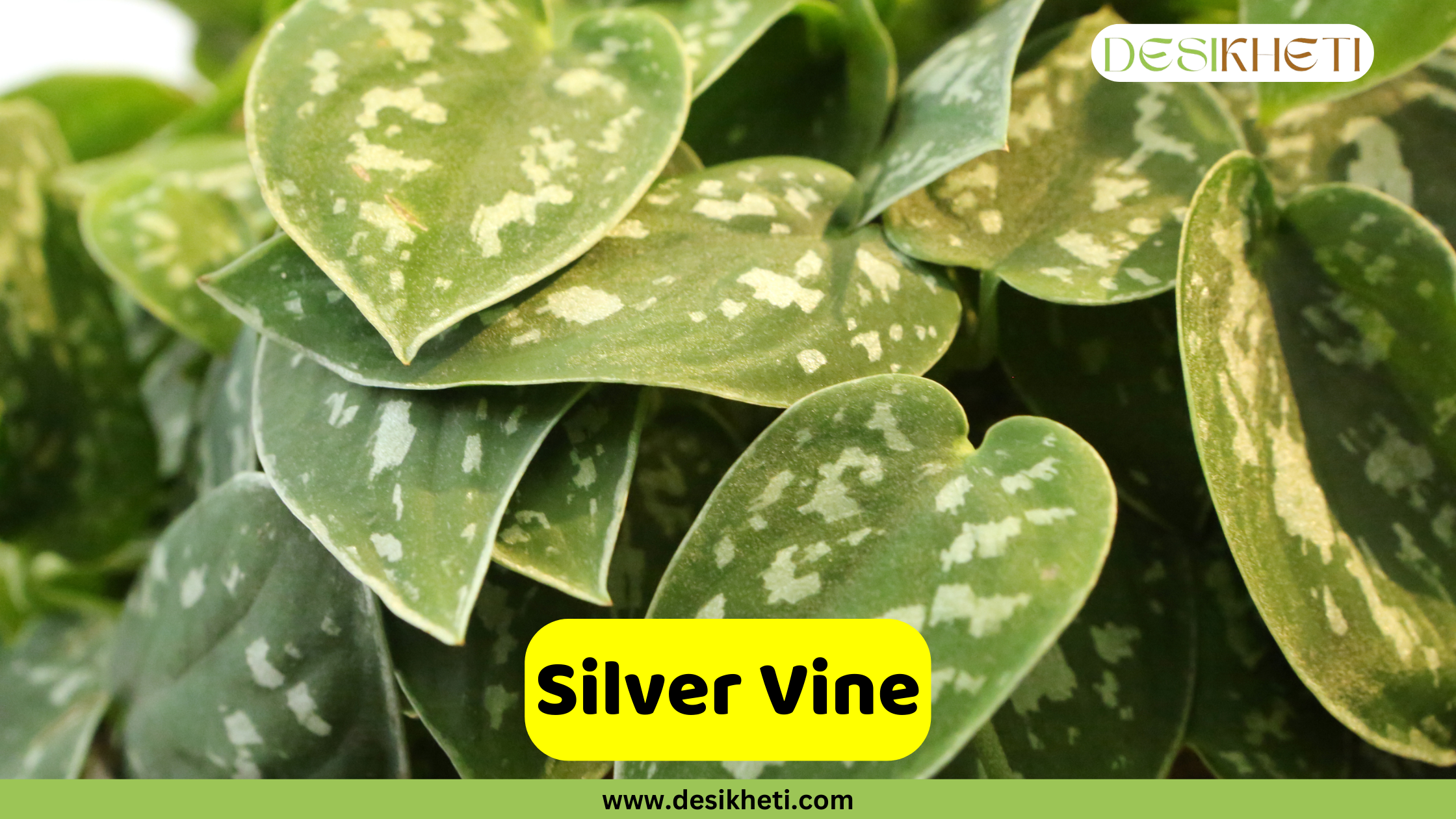
Botanical Name: Scindapsus pictus
Silver Vine is a stunning trailing or climbing plant with dark green, heart-shaped leaves adorned with silver splashes. Also known as Satin Pothos, it is prized for both its beauty and air-purifying qualities, making it a favorite indoor plant. This plant prefers bright, indirect sunlight but can adapt to lower light conditions as well. It looks great on walls, trellises, or in hanging baskets.
Uses and Benefits:
- Beautifies interiors with its variegated foliage
- Simple to grow and ideal for vertical gardens
- Beginner-friendly
Best Indoor Climber Plants
- Money Plant
- Heartleaf Philodendron
- Marble Queen Pothos
- Silver Vine / Satin Pothos
- Arrowhead Vine
- String of Nickels
- Zebrina
- Hoya
- Grape Ivy
Climbers Suitable for Pots & Containers
- Money Plant
- Marble Queen Pothos
- Arrowhead Vine
- Silver Vine
- Zebrina
- Heartleaf Philodendron
- String of Nickels
- Wax Ivy
- Betel Leaf Plant
Best Outdoor Climbing Plants
- Boston Ivy
- Creeping Fig
- English Ivy
- Sweet Potato Vine
- Betel Leaf Plant
- Grape Ivy
- Wax Ivy
Climbers for Shaded or Low Light Areas
- English Ivy
- Heartleaf Philodendron
- Marble Queen Pothos
- Arrowhead Vine
- Creeping Fig
- String of Nickels
- Silver Vine
- Wax Ivy
- Zebrina
Fast-Growing Climber Plants
- Money Plant
- Boston Ivy
- English Ivy
- Zebrina
- Creeping Fig
Low-Maintenance & Beginner-Friendly Climbers
- Money Plant
- Marble Queen Pothos
- Heartleaf Philodendron
- Arrowhead Vine
- Silver Vine
- Zebrina
- String of Nickels
- Creeping Fig
- Sweet Potato Vine
Climbers with Ornamental Foliage
- Marble Queen Pothos
- Silver Vine
- Arrowhead Vine
- Zebrina
- Grape Ivy
- Wax Ivy
- String of Nickels
- Sweet Potato Vine
Climbers with Air-Purifying Benefits
- Money Plant
- Heartleaf Philodendron
- Marble Queen Pothos
- Silver Vine
- English Ivy
- Arrowhead Vine
Vertical Garden-Friendly Climbers
- English Ivy
- Creeping Fig
- Heartleaf Philodendron
- Silver Vine
- Wax Ivy
- Sweet Potato Vine
- Boston Ivy
- Hoya
Growing & Care Tips for Climber Plants
To ensure healthy and lush climbers, keep these general tips in mind:
- Light: Most climbers prefer indirect sunlight or partial shade to avoid harsh direct sun.
- Watering: Keep the soil moist but not soggy; allow the top layer to dry before the next watering.
- Soil: Use well-draining, fertile soil rich in organic matter or compost.
- Pruning: Trim regularly to control shape, remove dead parts, and encourage bushy growth.
- Support: Provide trellises, walls, fences, or moss poles depending on the plant’s climbing nature.
Climbing and trailing plants are not just ornamental, they’re functional too. They help purify indoor air, reduce soil erosion, and bring a calm, green vibe to your surroundings. From hardy vines like English Ivy to decorative trailers like String of Nickels and Silver Vine, each plant offers something unique.
These low-maintenance green companions are perfect for beginner gardeners, urban homes, and even rural spaces with limited planting areas. Choose the right ones based on your sunlight and space availability, and you’ll enjoy the beauty of greenery all year round.
FAQs on Climber Plants
1. What are some interesting facts about English ivy?
A. English Ivy can cling to almost any surface using aerial roots, is effective in reducing indoor mold, and thrives in low light making it ideal for vertical gardens.
2. What are some interesting facts about betel leaves?
A. Betel leaves are traditionally used in Ayurveda and Indian rituals, have antibacterial properties, and belong to the pepper family (Piperaceae).
3. What is another name for grape ivy?
A. Grape Ivy is also known as Cissus rhombifolia.
4. What are the benefits of Boston Ivy?
A. Boston Ivy is excellent for covering walls, helps reduce heat through natural insulation, and is low-maintenance once established.
5. Do Marble Queen Pothos need sunlight?
A. Marble Queen Pothos prefers bright, indirect light but can tolerate low-light conditions. Too little light may reduce its variegation.
6. What are the benefits of Dischidia?
A. Dischidia plants are epiphytic, ideal for vertical or hanging planters. They require minimal soil and are perfect for decorative air-layered displays.
7. Can Zebrina plants grow in water?
A. Yes, Zebrina (Tradescantia zebrina) can be propagated and grown in water for extended periods, though long-term growth is better in soil.
8. Is Wax Ivy toxic?
A. Yes, Wax Ivy (Senecio macroglossus) is considered toxic to pets and humans if ingested.
9. What is another name for the sweet potato vine?
A. Sweet Potato Vine is also known as Ipomoea batatas.
10. How long does a Silver Vine last?
A. Silver Vine (Scindapsus pictus) is a long-lasting trailing plant that can thrive for many years with proper care, particularly in indirect light with moderate watering.
